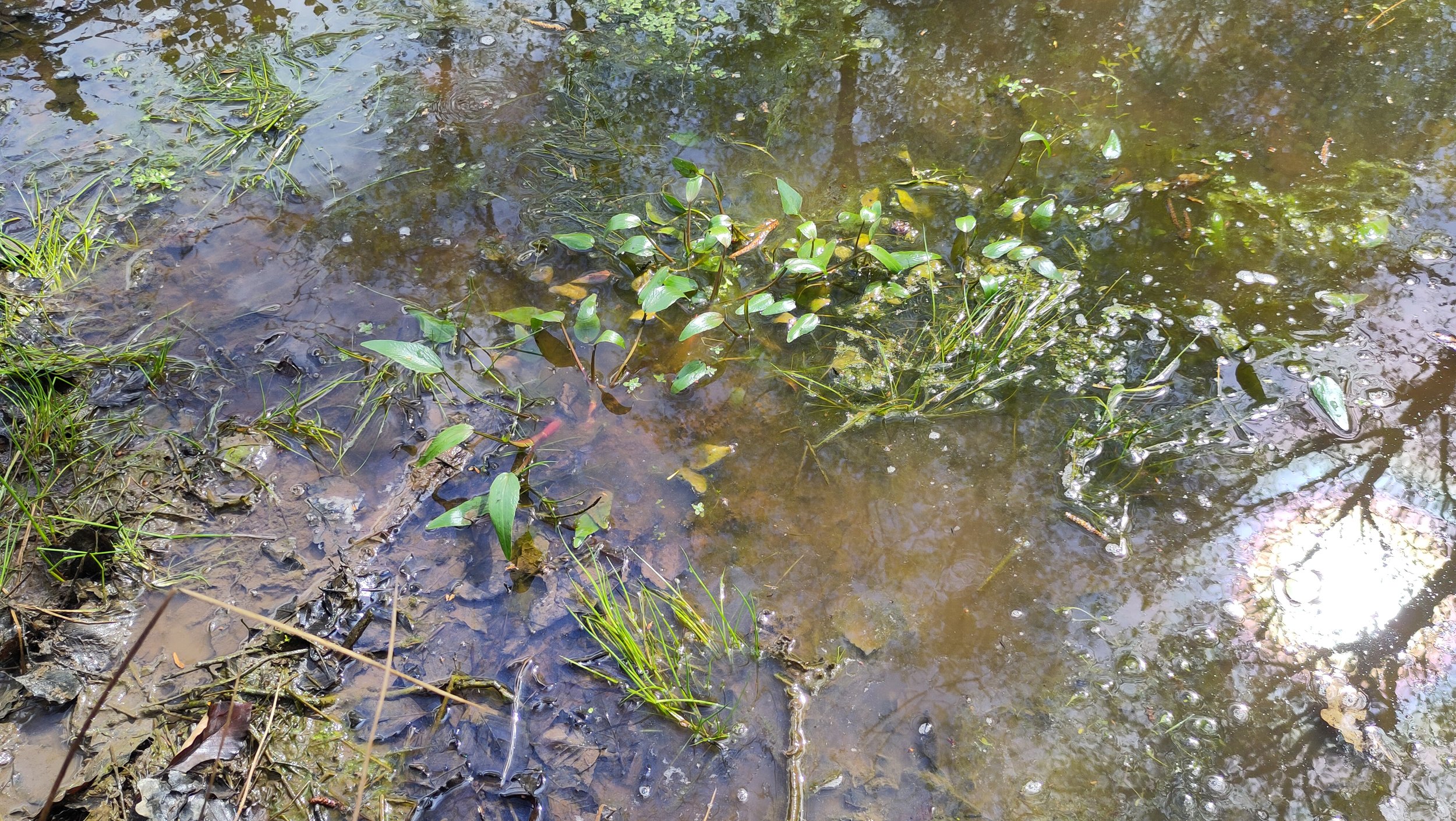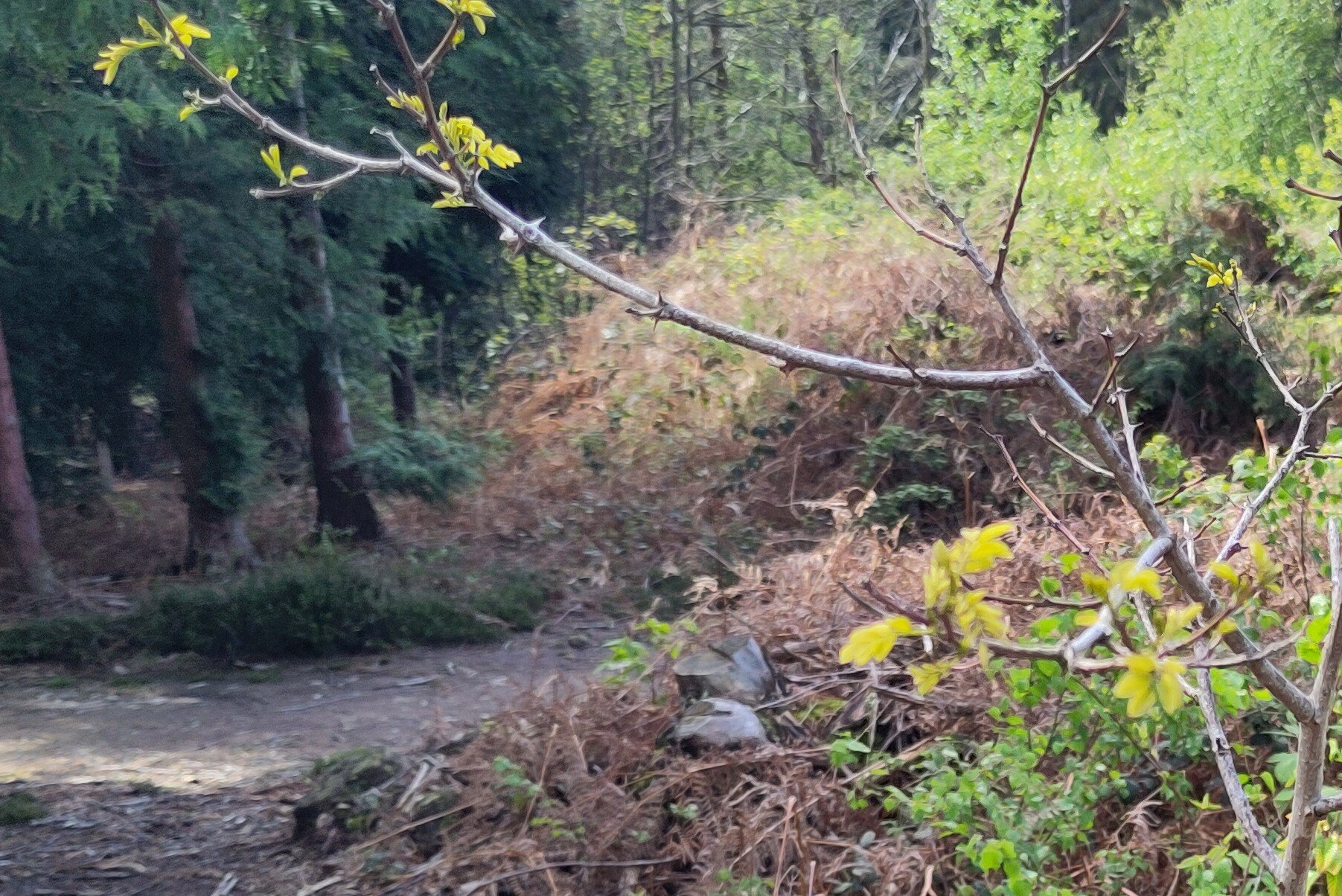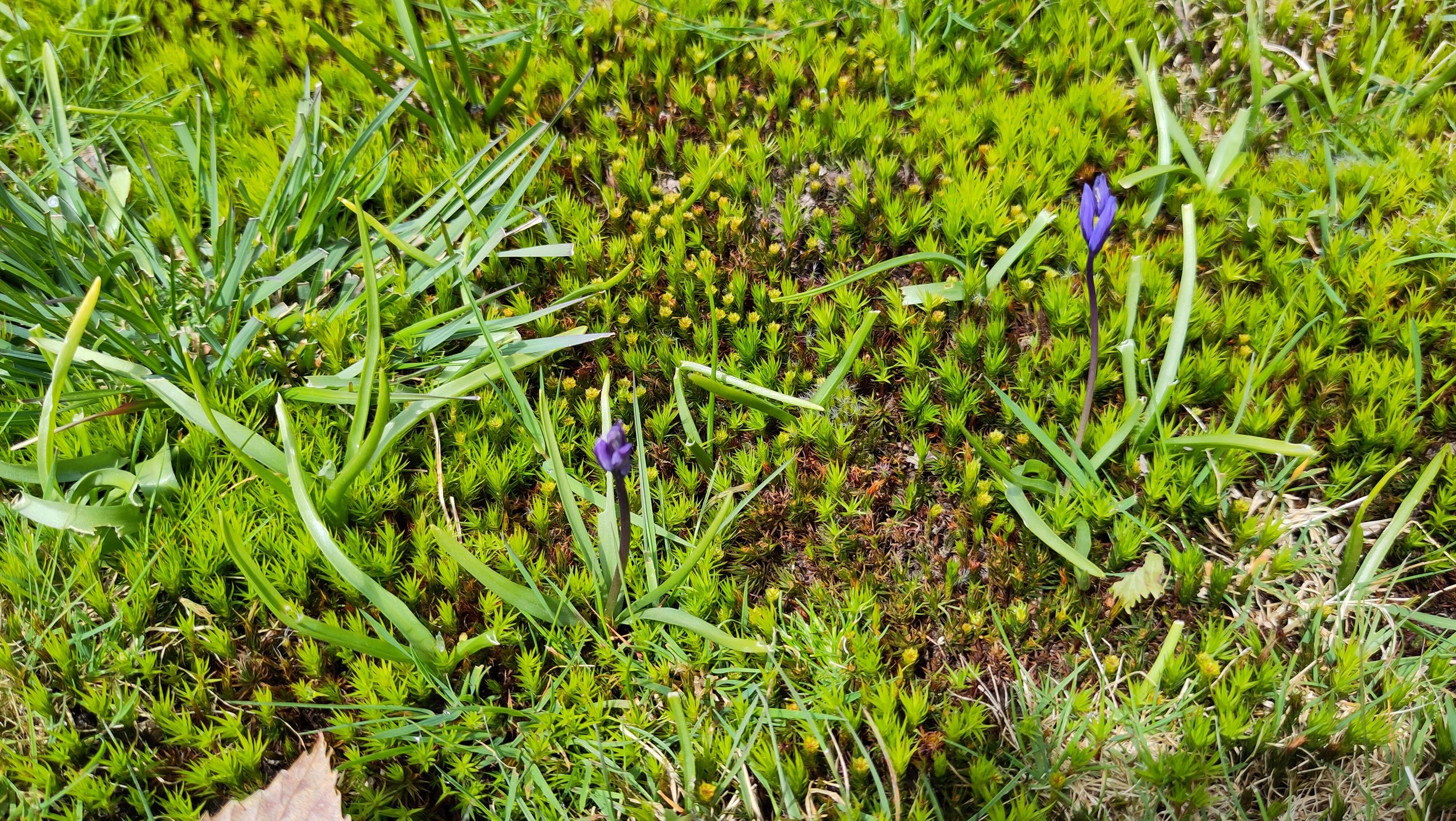Water Management and Wackin’ Bracken
Lesser Spearwort and Water Starwort in the lower of the new ponds in the lower wood
30 April 2024
Today I'm wallowing in watery biodiversity in Wilderness Wood. Water is the ‘stuff of life', which makes our planet unique. Astronomers comb the solar system, in fact the universe, in search of this remarkable substance. Not too much success so far though I'm afraid. Elon Musk would have us all up-sticks and emigrate to Mars, but even this “man the lifeboats!” approach to our sinking-ship planet is doomed without sufficient water on our new home rock.
Water Retention Strategy
Here at Wilderness Wood I've presided over a campaign to retain water on the site. The High Weald is notorious for it's geology refusing to hold onto anything more than a small proportion of the rainwater falling from the skies. The impermeable rocks prevent water percolating below ground, thus forcing all rainwater to find it's way immediately into watercourses. Subsequently, the water level in these channels quickly rises, leading to flooding downstream after any winter downpour.
But the reverse is then true in the summer. So little water is retained by the local bedrock that there are no hidden reserves to supply the springs and streams in summer. Consequently the streams and rivers dry out.
This is nothing new, but climate change has made the problem of too much and too little water a much more extreme one.
So we are introducing measures to retain water, a bit like in my garden where I have over 5000 litres of storage in plastic tanks, butts etc to ensure that I can water the garden throughout the summer – hose pipe ban or not.
A mass of tanks in scattered around Wilderness Wood would be an expensive and ugly prospect. Instead we are storing the water as ponds and other marshy wetlands for the benefit of wildlife. These water storage bodies fill up over the winter and provide a refuge for plants and animals reliant on them for water supply and drinking water respectively.
But enough of the theory. I'm here today to assess how well we are putting this theory into practice.
Excluding Rabbits and Wackin’ Bracken
First off though, I pop over to Bat Park to see how the rabbit fence is doing. We still have about 200m left to insert before we are finally rabbit-proof, but I need to check the sections already done. Rabbits have a habit of digging under chicken wire, so we have allowed for a 6-8 inch apron of mesh on the outside of the fence in an attempt to foil them. We have also put a layer of soil on top of this apron to disguise it from rabbit eyes. One thing I do note as I am checking the fence, is that growing Bracken fronds can push the mesh apron up, so I cut any fronds I find doing this. The newly added chicken wire certainly now looks bunny proof.
Next I decide to check the hedge planted inside Bat Park some 4 or 5 years ago. Since the exclusion of deer this hedge has recovered remarkably. Many of the previously nibbled shrubs are now looking very healthy. The one concern I do have is the swamping of the hedge shrubs by Bracken. Full grown Bracken can seriously shade smaller plants.
Recovering hedge shrubs are doing fine, but growing bracken can engulf recovering small trees
Late April is an excellent time to play at being a one-man-bovid and try trampling on the newly emerging bracken fronds. Various web sites suggest cutting bracken is better than crushing (doing this in June and repeating in July is also recommended), but a small trampling experiment in late April is worth a try.
The unfurling fronds are easily crushed underfoot. I find that this works well if you step on them just as they emerge from the ground like cobras to a piper's tune. Their delicate stems are easily broken this way. For those plants that have already reached a foot or more of growth it is less effective, so Wackin’ Bracken requires me to make good use of the short handled spade I always carry with me. You could employ a nettle basher, scythe or strimmer, but in this instance it is likely to smash the young hedge plants I'm trying to encourage to grow. In June I'll revisit the section I've ‘bovid trampled’ today, and repeat.
Snake charmed Bracken stems rise from the ground (top) but ‘bovid trampling’ is an effective deterent
The growing hedge shrubs look amazingly healthy, now that the deer can no longer get at them and I even find previously ‘dead’ hawthorn stumps bursting into leaf. Trees seem to have this amazing capacity to recover just when you think they won't. All looks good for now, but Bat Park will be a very parched place come July, so I won’t count my chickens just yet.
I take a look at the heathland area where many years ago Dan planted Acacia trees having been told they were a good forestry tree, especially in a dry area of the wood. I never approved, having lived on a London street where they had been planted by someone unaware of the size of their thorns. However, it turned out deer loved their leaves and bark and they appeared to die. With deer excluded these apparently dead trees are once again bursting into life.
Acacia tree returning to life - post-deer exclusion. But look at the thorns on them!
Bat Park is greening-up quite well, although much of it is moss, with a few small Bluebells making a re-appearance after years of absence.
Low-growing mosses and a few small Bluebells hark back to Bat Park’s former woodland existence
Water Management
Tramping down to the new ponds in the lower wood I am hopeful that we can manage the water in the valley bottom better. On arriving I am well pleased to find the recent rains have swollen the Wilderness Stream a little.
My first job is to mess around with the pond water levels a bit by removing the short log placed in the feeder channel from the main Wilderness Stream. This was put in place once the ponds were full to stop them overfilling. With the log removed I then insert one in the stream a little further downstream. “Hey Presto” water backs up behind the log in the stream and starts to run along the feeder channel into the adjacent pond. It's actually a pretty rudimentary sluice gate arrangement, but effective nonetheless.
The log now acts as a weir, permitting some water to pass down the Wilderness Stream once the pond is at a suitable level (totally damming the stream would risk overfilling the pond, so careful management of the water levels is critical).
A well-placed log diverts water from the Wilderness Stream into the new ponds
Satisfied that the pond will eventually reach it's optimum level, I next set about recording what plants are now growing in our pond/wetland area.
Here is the list of species found:
Broadleaved pondweed
Wavy Bittercress
Water Figwort
Frogbit
Foxglove
Soft Rush
Water Dock
Pendulous Sedge
Lesser Spearwort
Male Fern
Bluebell
Bramble
Yellow Pimpernel
Water Starwort
Enchanters Nightshade
Broadleaved Willowherb
Yellow Flag
Wood Anemone
Wood Sorrel
Some of these are 'relict' flora surviving from when this area was wet woodland eg. Wood Sorrel, Wood Anemone, Male Fern and Bluebell. These all occupy the more elevated dry areas.
Where open water has developed (ponds), submerged plants have colonised it eg. Water Starwort and Broad-leaved Pondweed.
The shelving bed/banks suit emergent plants which happily grow with their roots in the water, but their leaves and flowers above the pond water level eg. Water Dock, Lesser Spearwort.
Other species prefer damp soil but not necessarily submerged eg. Pendulous Sedge, Water Figwort and Soft Rush.
With the clearance of the woodland here, opportunist plants such as Foxglove, Wavy Bittercress and Yellow Pimpernel have now moved in.
Frogbit and Yellow Flag are both species I have introduced from my own pond at home. If you are looking to add plants to a pond at home please take care to avoid introducing invasive, non-native species such as Himalayan Balsam and Water Fern. This can also be a real problem when stocking your own pond with plants from a garden or aquatics centre.
NEVER INTRODUCE PLANTS INTO SOMEONE ELSE'S POND, UNLESS YOU HAVE THE OWNERS PERMISSION.
My work finished I take 5 minutes to enjoy the ambiance of the pond. No sign of any dragonflies as yet, but plenty of winged insects, including Pond Skaters and Diving Beetles. Things will hot up shortly, as summer approaches.
I am well pleased by the changes Mother Nature has wrought on this small damp patch of Wilderness Wood. Yes, we cleared the trees, dug the silt out of the old pond and redirected the water, but the magical bit is the gradual arrival of wildlife drawn to this damp oasis in the dryness of Wilderness Wood.
Engineered by Man, decorated by Nature.
David Horne
A Year in the Wilderness 2023-2024 has now been published (through Kindle Direct Publishing). You can buy the softback version from Amazon, or shortly get an electronic version through Amazon too. You can even buy a copy from The Hatch at Wilderness Wood. Alternatively just read through the back pages of this blog - for free!






